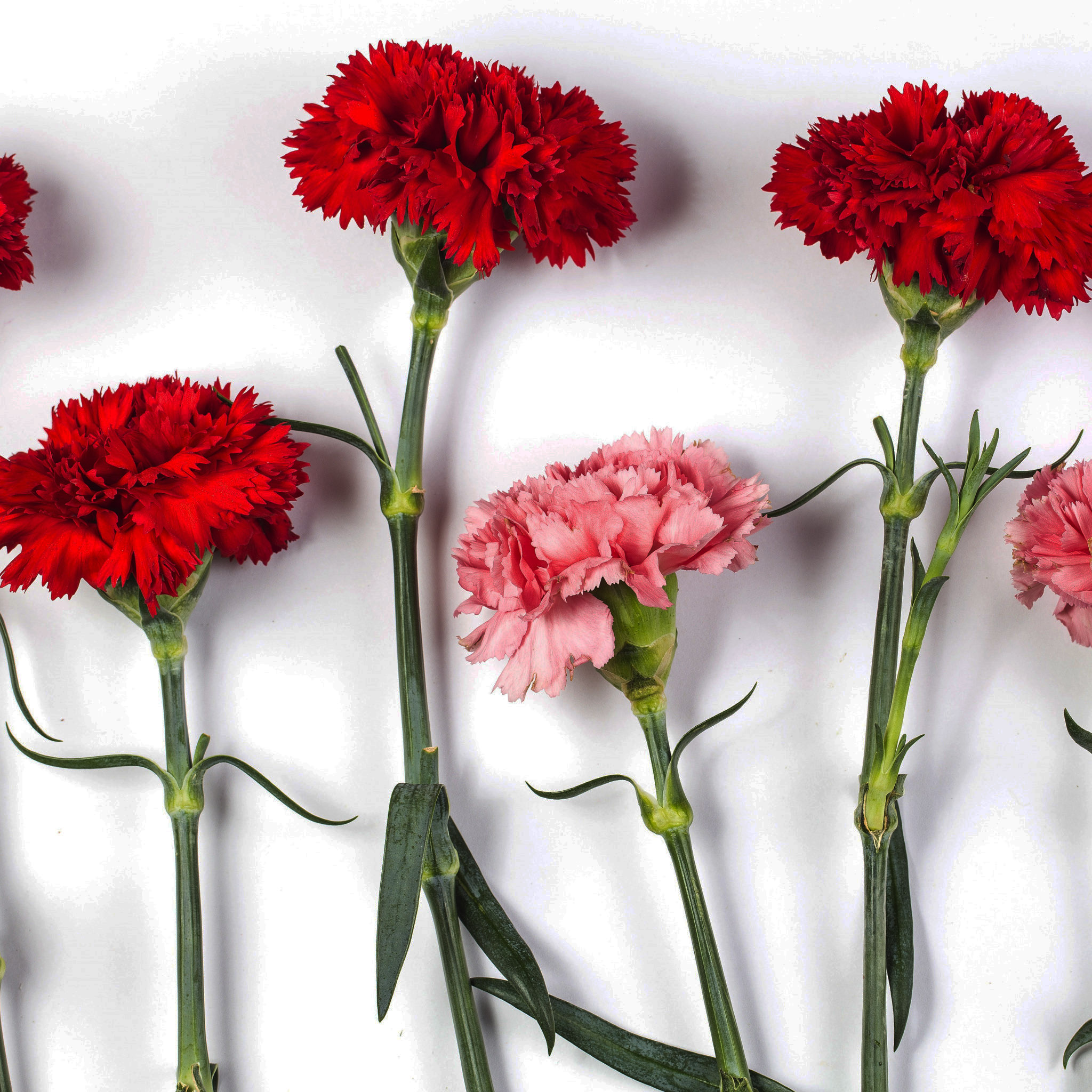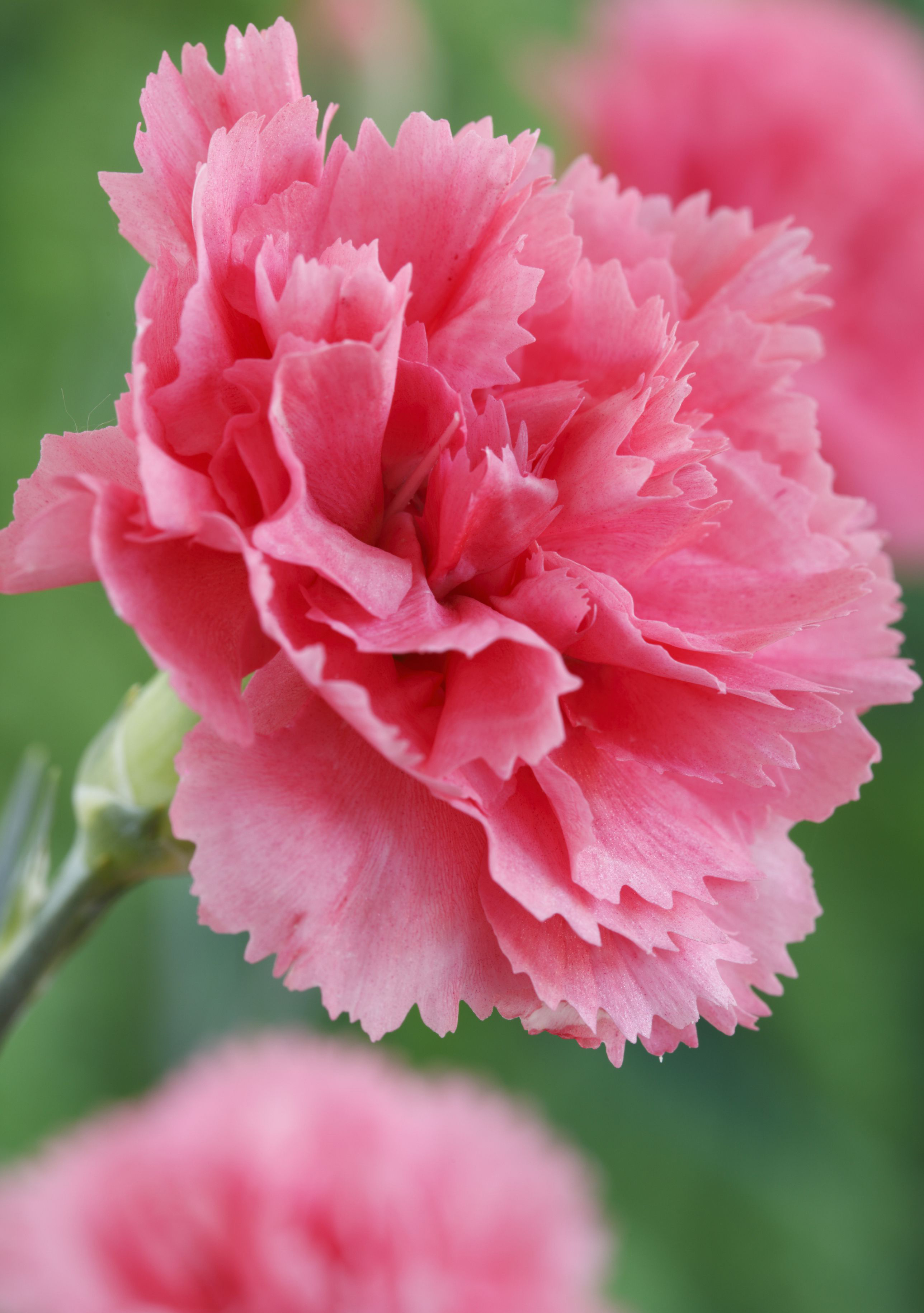Carnation flowers have been cherished for centuries as one of the most beloved blooms in the world. Known for their lush petals, vibrant colors, and sweet fragrance, carnations continue to captivate people across cultures and generations. These timeless flowers hold deep symbolic meanings and are often associated with love, admiration, and fascination. In this article, we will explore the fascinating world of carnation flowers, from their rich history and cultural significance to their care and cultivation.
From weddings to Mother's Day celebrations, carnations are a popular choice for floral arrangements and bouquets. Their versatility and durability make them a favorite among florists and flower enthusiasts alike. Whether you're looking to express love, celebrate a special occasion, or simply brighten someone's day, carnations are a perfect choice.
This comprehensive guide dives deep into everything you need to know about carnation flowers. We'll explore their origins, symbolism, varieties, and care tips, while also shedding light on their role in modern floristry and beyond. Let's embark on a journey to discover why carnations remain one of the most cherished blooms in the world.
Read also:Bamyan Kabobs A Culinary Journey Through Flavorful Afghan Cuisine
Table of Contents
- The History of Carnation Flowers
- Symbolism and Meaning of Carnations
- Varieties of Carnation Flowers
- Caring for Carnation Flowers
- Cultivating Carnations
- Uses of Carnations in Floristry
- Health Benefits of Carnations
- Myths and Legends Surrounding Carnations
- Tips for Buying Carnations
- Conclusion
The History of Carnation Flowers
Carnations have a rich and storied history that dates back thousands of years. These flowers were first cultivated in the Mediterranean region over 2,000 years ago and were highly prized by the ancient Greeks and Romans. The name "carnation" is believed to come from the Latin word "corona," meaning crown, as these flowers were often used in ceremonial crowns and garlands.
In medieval Europe, carnations became a symbol of religious devotion and were frequently depicted in religious art. Their popularity continued to grow during the Renaissance, where they were admired for their beauty and fragrance. Today, carnations are cultivated worldwide and remain one of the most popular flowers for bouquets, arrangements, and special occasions.
Evolution of Carnation Cultivation
The cultivation of carnations has evolved significantly over the centuries. Modern horticultural techniques have allowed for the development of new varieties with vibrant colors, unique patterns, and improved durability. These advancements have made carnations even more versatile and appealing for florists and consumers alike.
Symbolism and Meaning of Carnations
Carnations are rich in symbolism and meaning, making them a popular choice for expressing emotions and sentiments. Different colors of carnations carry distinct meanings, allowing you to convey specific messages through these beautiful blooms.
- Red carnations symbolize love and admiration.
- Pink carnations are associated with gratitude and motherly love.
- White carnations represent purity, innocence, and good luck.
- Purple carnations signify capriciousness and unpredictability.
- Yellow carnations express disappointment or rejection.
Cultural Significance of Carnations
In many cultures, carnations hold deep cultural significance. For example, in Korea, carnations are the official flower of Mother's Day, symbolizing the strength and resilience of motherhood. In Spain, red carnations are a national symbol and are often worn in traditional celebrations.
Varieties of Carnation Flowers
Carnations come in a wide variety of types, each with its own unique characteristics and charm. The three main types of carnations are:
Read also:Unveiling The Legacy Waxy Oconnors London
- Large-Flowered Carnations: Known for their large blooms and vibrant colors, these are the most common type used in bouquets.
- Miniature Carnations: Also called spray carnations, these have smaller blooms and are often used in corsages and boutonnieres.
- Dwarf Carnations: These compact plants produce multiple small flowers and are ideal for garden borders and containers.
Popular Carnation Colors
Carnations are available in a wide range of colors, each with its own symbolic meaning. Some of the most popular colors include:
- Red
- Pink
- White
- Purple
- Yellow
Caring for Carnation Flowers
To ensure your carnation flowers remain fresh and vibrant, proper care is essential. Follow these simple tips to extend the life of your blooms:
- Trim the stems at a 45-degree angle to allow for better water absorption.
- Change the water in the vase every two to three days to prevent bacteria growth.
- Keep the flowers away from direct sunlight and heat sources to avoid wilting.
- Add flower food to the water to nourish the blooms and promote longevity.
Troubleshooting Common Issues
Common issues with carnations include wilting, discoloration, and fungal infections. To address these problems, ensure proper watering, maintain good air circulation, and remove any damaged leaves or petals promptly.
Cultivating Carnations
Growing your own carnations can be a rewarding experience. These hardy plants thrive in well-drained soil and full sunlight, making them ideal for gardens and containers. Follow these steps to cultivate healthy carnations:
- Choose a sunny location with well-drained soil.
- Plant the seeds or cuttings about 12 inches apart to allow for proper airflow.
- Water the plants regularly, ensuring the soil remains moist but not waterlogged.
- Fertilize the plants every four to six weeks to promote healthy growth.
Common Pests and Diseases
Carnations are susceptible to pests like aphids and diseases such as fungal infections. Regularly inspect your plants for signs of infestation or disease and take appropriate measures to address any issues promptly.
Uses of Carnations in Floristry
Carnations are a versatile choice for florists, thanks to their durability, variety of colors, and long vase life. They are commonly used in:
- Bridal bouquets
- Funeral arrangements
- Thank-you bouquets
- Corporate events
Designing with Carnations
When designing with carnations, consider pairing them with complementary flowers like roses, lilies, or baby's breath. This creates a harmonious and visually appealing arrangement that highlights the beauty of the carnations.
Health Benefits of Carnations
While carnations are primarily admired for their beauty, they also offer potential health benefits. Studies suggest that carnation extracts may have antioxidant properties and could help reduce stress and anxiety. Additionally, the sweet fragrance of carnations can promote relaxation and improve mood.
Traditional Uses in Medicine
In traditional medicine, carnations have been used to treat various ailments, including headaches, insomnia, and digestive issues. However, more research is needed to fully understand their therapeutic potential.
Myths and Legends Surrounding Carnations
Carnations have inspired countless myths and legends throughout history. One popular legend suggests that carnations grew from the tears of the Virgin Mary as she wept for Jesus on the cross. Another tale tells of how the ancient Greeks believed carnations to be the tears of the goddess Diana.
Cultural Tales and Stories
In many cultures, carnations are associated with love, devotion, and protection. For example, in Korea, it is believed that giving someone a carnation can ward off evil spirits and bring good fortune.
Tips for Buying Carnations
When purchasing carnations, look for fresh blooms with vibrant colors and firm stems. Avoid flowers with wilting petals or signs of damage. To ensure longevity, choose partially opened blooms that will continue to develop over time.
Where to Buy Carnations
Carnations are widely available at florists, grocery stores, and online retailers. For the best quality, consider purchasing from a reputable florist who specializes in fresh, seasonal blooms.
Conclusion
Carnation flowers continue to enchant people around the world with their beauty, fragrance, and symbolic meanings. From their rich history and cultural significance to their versatility in floristry, carnations offer something special for every occasion. By following proper care and cultivation techniques, you can enjoy these timeless blooms for years to come.
We invite you to share your thoughts and experiences with carnations in the comments below. Whether you're a seasoned florist or a flower enthusiast, your insights can help others appreciate the beauty and significance of these remarkable flowers. Don't forget to explore our other articles for more fascinating insights into the world of flowers!



